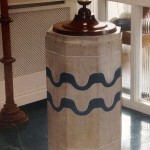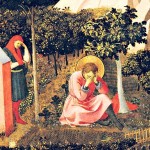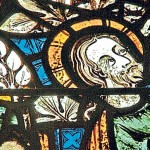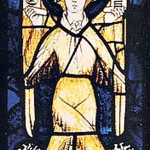When the spire of Coventry Cathedral tottered
before the Blitz, the church of St Michael, Coventry, was a marvel. Now it is receiving smartly-deserved consideration
As ruins go, the previous cathedral of St Michael, Coventry is towering. The 295ft spire is the tallest among medieval English cathedrals after Salisbury and Norwich. St Michael’s was once no longer even built as a cathedral, which it became in 1918, however as a parish church.
it’s arduous to peer the ruins today with out unhappiness at its destruction by using bombing seventy five years ago, on November 14 1940. but the steeple had been with reference to toppling 80 years prior. “Its exterior is, in fact, a mere wreck,” stated the architect George Gilbert Scott in 1869, “the mud of disintegration falling in lots about its base, and masses of stone now and again falling down, making elevated destruction of the parts which they strike of their passage.”
the great medieval church, amplified by means of the burghers of Coventry, was once lucky to have survived even into Victoria’s reign. In Warwick, the church of St Mary had in 1694 misplaced its tower, nave, transepts and aisles through fire, which at all times threatened bushes-wealthy crowded medieval cities.
At Coventry, the Victorian restorers destroyed as they went, refacing the sandstone of the tower walls to a depth of a foot, in and out. earlier the ashlar had been stripped from the aisles and the tracery rebuilt to a more complicated sample. within the Eighties, many roof tie beams had been discovered to have failed, and so 50 trusses were cut down the centre and iron flitch plates inserted, bolted at intervals of two or three toes. These had been to bring disastrous complications all through the Blitz.
On that November night in 1940, the four firewatchers on responsibility have been overwhelmed again by the rapidly spreading flames from incendiary bombs on the low-pitched roofs. they may see that the roof could be lost, however they did not are expecting the partitions of the nave and chancel to fall because the wrought-iron flitch plates buckled within the heat, knocking down the piers and arches.
nowadays, guests get an impression of a wide and low nave, since the partitions standing are those of the north and south aisles. no longer instantly apparent are the surviving crypts. The east crypt used to be put into use for worship whereas the struggle used to be still on. The west crypt, its vaults supported with the aid of two lovely octagonal pillars, used to be, with the chapel above, said in 1317 as the Chapel of the Blessed Virgin Mary on the Hill in the Cemetery of St Michael.
It used to be an crucial characteristic of St Michael’s that, whereas nudging the Guildhall on one side, it was once uncovered on the opposite by using the falling land forming an in depth burial ground. The church sat atop a hill (as church buildings of St Michael frequently do), for its first role was once because the chapel of the citadel. prior to the Conquest there had most certainly been a Saxon minster neighborhood.
by using the 12th century, it used to be a crowded architectural scene, with the neighbouring church of the Holy Trinity on the web site of the Saxon minster and simply to the north the abbey of St Mary, based via expensive previous girl Godiva and her husband. (Her actual identify was Godgifu, “reward of God”, like Dedodatus the son of St Augustine of Hippo). The abbey bore the status of a cathedral from 1102 to 1188.
just like the Guildhall, which acquired a ideally suited wall of stained glass depicting English kings, the parish church of St Michael had its windows stuffed with glass of a more sacred sort. This used to be moved about as the centuries elapsed, however in 1939 the medieval glass used to be wisely taken out for protection.
Some has been put in within the new cathedral, such because the angel pictured (on a wheel just like the cherubim within the book of Ezekiel), conserving a textual content above his head: Gloria laudis resonet in ore omnium, “Let the glory of praise be heard from the mouth of all.” It’s from an antiphon to God the Holy Trinity.
Some 5,000 pieces of medieval glass remain in retailer. dollars are sought for their restoration. There’s a section on the glass and an evidence of the history of the old cathedral, with tremendous color photographs, in St Michael’s Coventry by means of George Demidowicz and Heather Gilderdale Scott (£19.ninety five), in the enterprising Scala series.
earlier than the Blitz, the church of St Michael, Coventry, was a surprise. Now it is receiving neatly-deserved consideration![]()
Telegraph Columnists: day-to-day opinion, editorials and columns from our star writers
(108)














